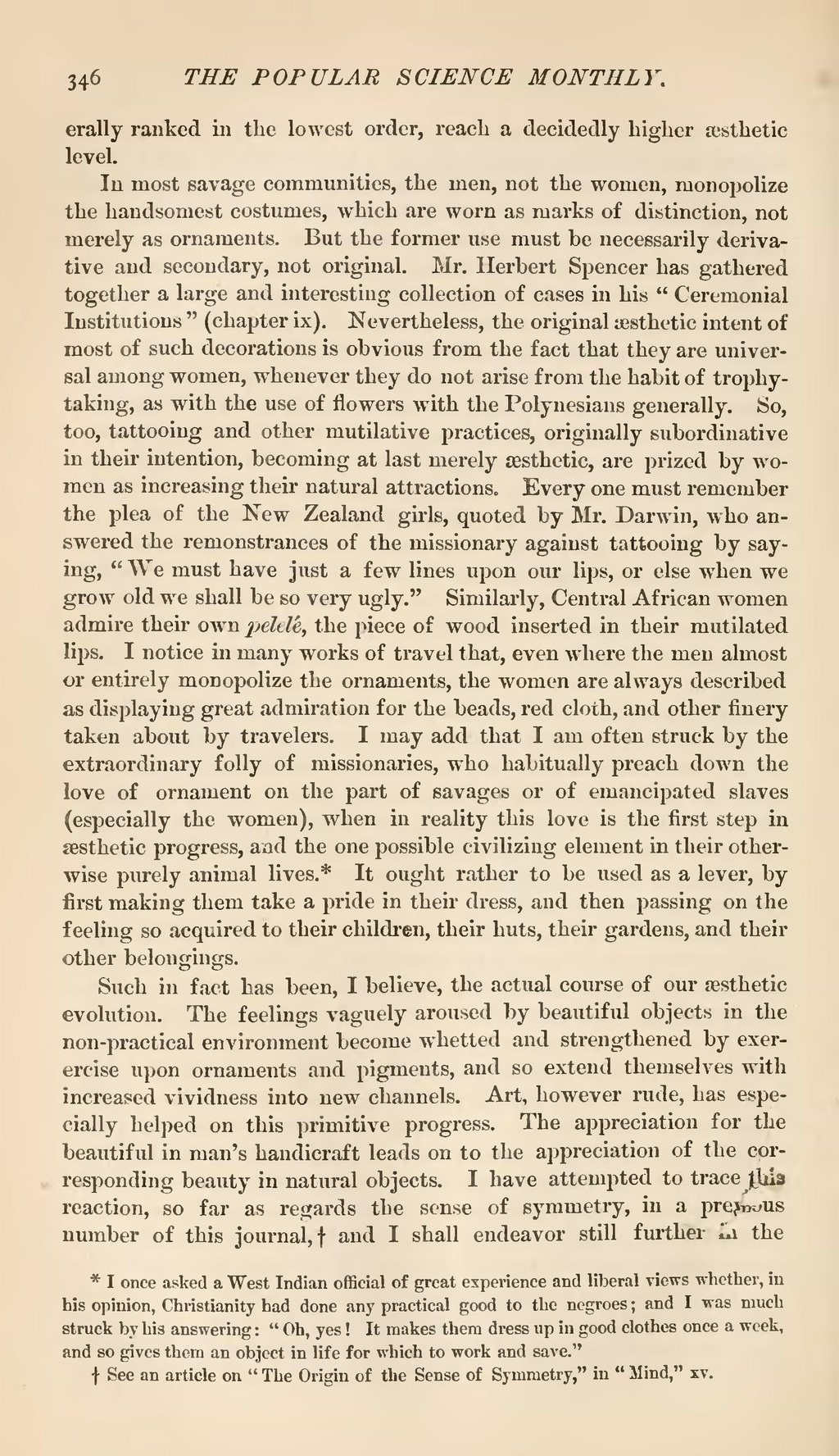erally ranked in the lowest order, reach a decidedly higher æsthetic level.
In most savage communities, the men, not the women, monopolize the handsomest costumes, which are worn as marks of distinction, not merely as ornaments. But the former use must be necessarily derivative and secondary, not original. Mr. Herbert Spencer has gathered together a large and interesting collection of cases in his "Ceremonial Institutions" (chapter ix). Nevertheless, the original aesthetic intent of most of such decorations is obvious from the fact that they are universal among women, whenever they do not arise from the habit of trophy taking, as with the use of flowers with the Polynesians generally. So, too, tattooing and other mutilative practices, originally subordinative in their intention, becoming at last merely æsthetic, are prized by women as increasing their natural attractions. Every one must remember the plea of the New Zealand girls, quoted by Mr. Darwin, who answered the remonstrances of the missionary against tattooing by saying, "We must have just a few lines upon our lips, or else when we grow old we shall be so very ugly." Similarly, Central African women admire their own pelelé, the piece of wood inserted in their mutilated lips. I notice in many works of travel that, even where the men almost or entirely monopolize the ornaments, the women are always described as displaying great admiration for the beads, red cloth, and other finery taken about by travelers. I may add that I am often struck by the extraordinary folly of missionaries, who habitually preach down the love of ornament on the part of savages or of emancipated slaves (especially the women), when in reality this love is the first step in aesthetic progress, and the one possible civilizing element in their otherwise purely animal lives.[1] It ought rather to be used as a lever, by first making them take a pride in their dress, and then passing on the feeling so acquired to their children, their huts, their gardens, and their other belongings.
Such in fact has been, I believe, the actual course of our aesthetic evolution. The feelings vaguely aroused by beautiful objects in the non-practical environment become whetted and strengthened by exerercise upon ornaments and pigments, and so extend themselves with increased vividness into new channels. Art, however rude, has especially helped on this primitive progress. The appreciation for the beautiful in man's handicraft leads on to the appreciation of the corresponding beauty in natural objects. I have attempted to trace this reaction, so far as regards the sense of symmetry, in a previous number of this journal,[2] and I shall endeavor still further in the
- ↑ I once asked a West Indian official of great experience and liberal views whether, in his opinion, Christianity had done any practical good to the negroes; and I was much struck by his answering: "Oh, yes! It makes them dress up in good clothes once a week, and so gives them an object in life for which to work and save."
- ↑ See an article on "The Origin of the Sense of Symmetry," in "Mind," xv.
